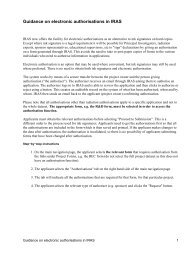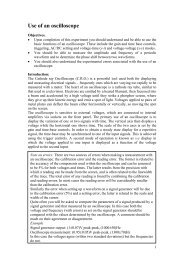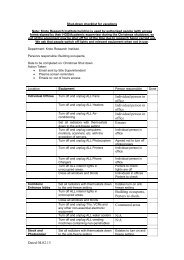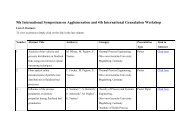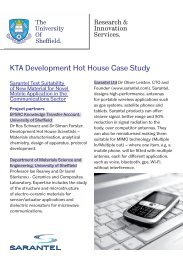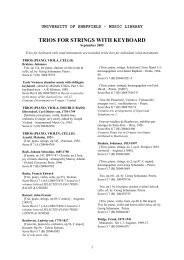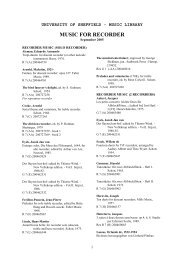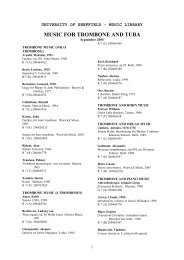Huron & SNAP Documentation
Huron & SNAP Documentation
Huron & SNAP Documentation
You also want an ePaper? Increase the reach of your titles
YUMPU automatically turns print PDFs into web optimized ePapers that Google loves.
↓ To specify the Echo settings<br />
↓ To set the reverberation time<br />
for Low frequencies<br />
↓ To set the reverberation time<br />
for High frequencies<br />
Define reverberation time<br />
Define Diffusion time<br />
↓ To set the Diffusion of sound at<br />
low frequencies<br />
↓ To set the Diffusion of sound at<br />
high frequencies<br />
Generate impulse signals<br />
OTHER SIMULATION TOOLS<br />
• Echo Delay is the time in seconds that the first order<br />
reverberation / echoes take to reach the microphone. This<br />
value is ignored in AniScape mode, as no first order<br />
reflections are produced.<br />
• Echo elevation is the elevation from which the echoes<br />
appear to originate. For example. An elevation of -20<br />
degrees simulates reflections coming off the floor of a room,<br />
while an elevation of 45 degrees simulates reflections<br />
coming from the ceiling.<br />
1. Type the time for echo delay in seconds in the Echo Delay<br />
box.<br />
2. Type the echo elevation in degrees in the Echo Elevation<br />
box.<br />
Reverberation time represents the amount of time taken for the<br />
sound pressure of an initial sound source to drop by 60db. For<br />
example, a handclap with an initial sound pressure level of<br />
30dB in a room with a reverberation time of 2.00 seconds, will<br />
take 2.00 seconds to reach a volume of -30dB. Setting longer<br />
reverberation times, produces more echoic room responses.<br />
Reverberation times are added to the room simulation in two<br />
segments, Low frequency, and High frequency.<br />
• Type the new value in seconds into the low freq Reverb<br />
Time box.<br />
• Type the new value in seconds into the high freq Reverb<br />
Time box.<br />
Diffusion is the amount of atrophy that occurs to a sound signal<br />
after it reflects off a room surface. For example, if the diffusion<br />
amount is set at 10.00% the first time a sound hits the wall only<br />
90% of the existing sound will be reflected.<br />
• Type the new value as a percentage loss in the low freq<br />
Diffusion box.<br />
• Type the new value as a percentage loss in the high freq<br />
Diffusion box.<br />
Once all the values for the room have been set it is possible to<br />
generate the room impulse signals.<br />
HURON TECHNICAL MANUAL PAGE 156





